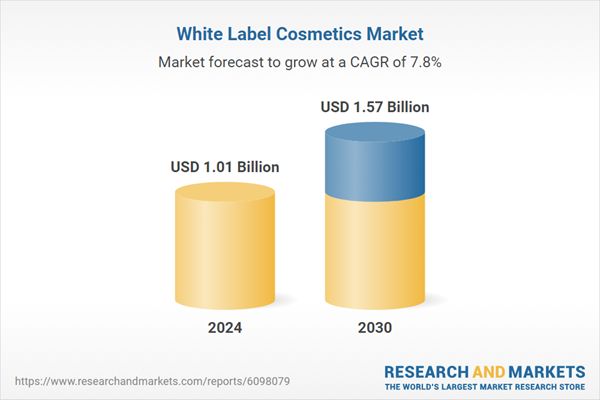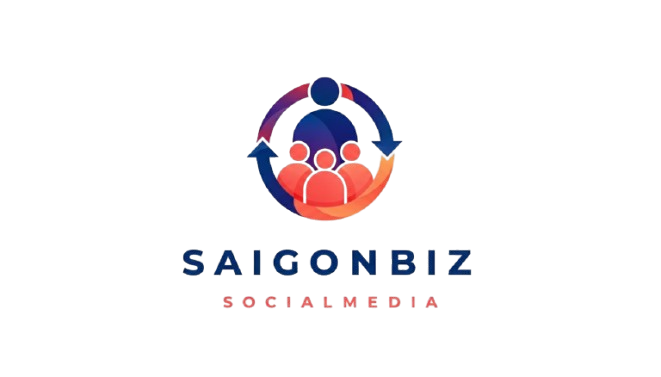The White Label Cosmetics Market is projected to grow from USD 1.01 billion in 2024 to USD 1.57 billion by 2030, at a CAGR of 7.80%. Driven by demand for niche, innovative beauty brands, startups leverage white label solutions for rapid market entry. Key trends include skincare, organic products, and DTC sales, with North America leading.
Dublin, July 01, 2025 (GLOBE NEWSWIRE) — The “White Label Cosmetics Market Size, Share & Trends Analysis Report by Product (Skincare, Haircare, Color Cosmetics, Fragrance), Type, End-use (Men, Women), Distribution Channel, and Region with Growth Forecasts, 2025-2030” report has been added to ResearchAndMarkets.com’s offering.
The White Label Cosmetics Market was valued at USD 1.01 billion in 2024, and is projected to reach USD 1.57 billion by 2030, rising at a CAGR of 7.80%.
Across global markets, consumers are showing increasing interest in niche beauty brands that offer quality, innovation, and authenticity qualities often delivered by emerging labels backed by white label manufacturers. With rising consumer expectations and the social media-driven demand for new product launches, startups and indie brands are turning to white label solutions to meet market needs quickly and efficiently.

White label cosmetic manufacturers offer turnkey solutions that eliminate many of the traditional barriers to entry in the beauty sector. These manufacturers provide pre-formulated and tested cosmetic products, allowing brands to customize packaging, branding, and positioning. This streamlines the production process, significantly reducing the time and capital required to bring new products to market. As a result, entrepreneurs can focus on building their brand identity and engaging with consumers, while the technical and manufacturing aspects are professionally managed behind the scenes.
For small businesses and startups, developing cosmetic formulas from scratch can be cost-prohibitive and time-consuming. White label partners not only provide high-quality, ready-to-market formulations but also ensure regulatory compliance, product safety, and industry-standard certifications. This support is crucial for new entrants looking to gain credibility and compete in a saturated market.
Moreover, white label cosmetic companies often act as strategic partners beyond manufacturing. They bring expertise in trend forecasting, product development, and marketing strategies. This collaboration helps emerging brands remain agile, innovative, and responsive to evolving consumer preferences. With sustainability and clean beauty becoming key market differentiators, many white label providers now also offer eco-conscious and vegan formulations, empowering new brands to align with modern ethical standards without compromising on quality.
White Label Cosmetics Market Report Highlights
- The skincare segment accounted for a significant revenue share in 2024, fueled by increasing interest in self-care and everyday skincare routines. Brands are leveraging white label options to quickly meet consumer demand for effective, ready-made products.
- Organic/natural white label cosmetics held a substantial revenue share in 2024, as consumers increasingly seek products free from synthetic chemicals and harmful additives. The demand is fueled by rising awareness around skin health, sustainability, and ethical sourcing. Brands are responding by offering cleaner formulations through white label partnerships to meet this evolving consumer interest.
- Female consumers of white label cosmetics held a substantial revenue share in 2024, driven by their consistent demand for a wide range of beauty and personal care products. Their preference for cost-effective yet high-quality alternatives has made them a dominant consumer group in this segment.
- Direct-to-consumer (DTC) e-commerce sales of white label cosmetics held a significant revenue share in 2024, due to their ability to offer quick market entry and cost efficiency. Brands benefit from direct customer feedback, faster product launches, and personalized shopping experiences. The growing reliance on online shopping has further strengthened the DTC model in this space.
- North America dominated the global white label cosmetics market with a revenue share of 35.85% in 2024, driven by a high adoption rate of personalized and innovative cosmetic products and a thriving network of brands utilizing white label manufacturing to accelerate product launches.
This report addresses:
- Market intelligence to enable effective decision-making
- Market estimates and forecasts from 2018 to 2030
- Growth opportunities and trend analyses
- Segment and regional revenue forecasts for market assessment
- Competition strategy and market share analysis
- Product innovation listings for you to stay ahead of the curve
Companies Featured
The major companies featured in this White Label Cosmetics market report include:
- Audrey Morris Cosmetics International.
- NF Skin.
- HSA Cosmetics
- CarasaLab
- Lady Burd
- COSMEWAX S.A.
- kdc/one
- INTERCOS S.P.A
- Onoxa LLC
- Modern Basic Cosmetics.
Key Attributes:
| Report Attribute | Details |
| No. of Pages | 90 |
| Forecast Period | 2024 – 2030 |
| Estimated Market Value (USD) in 2024 | $1.01 Billion |
| Forecasted Market Value (USD) by 2030 | $1.57 Billion |
| Compound Annual Growth Rate | 7.8% |
| Regions Covered | Global |
Key Topics Covered:
Chapter 1. Methodology and Scope
Chapter 2. Executive Summary
2.1. Market Snapshot
2.2. Product Outlook
2.3. Type Outlook
2.4. End Use Outlook
2.5. Distribution Channel Outlook
2.6. Regional Outlook
2.7. Competitive Landscape Snapshot
Chapter 3. White Label Cosmetics Market Variables, Trends & Scope
3.1. Market Lineage Outlook
3.2. Penetration and Growth Prospect Mapping
3.3. Industry Value Chain Analysis
3.4. Market Dynamics
3.5. Industry Analysis Tools
3.6. Market Entry Strategies
Chapter 4. White Label Cosmetics Market: Consumer Behavior Analysis
4.1. Consumer Trends & Preferences
4.2. Factors Affecting Buying Decisions
4.3. Consumer Product Adoption
4.4. Observations & Recommendations
Chapter 5. White Label Cosmetics Market: Product Estimates & Trend Analysis
5.1. White Label Cosmetics Market, By Product: Key Takeaways
5.2. Product Movement Analysis & Market Share, 2024 & 2030
5.3. Market Estimates & Forecasts, by Product, 2018-2030 (USD Billion)
5.3.1. Skincare
5.3.2. Haircare
5.3.3. Color Cosmetics
5.3.4. Fragrance
Chapter 6. White Label Cosmetics Market: Type Estimates & Trend Analysis
6.1. White Label Cosmetics Market, By Type: Key Takeaways
6.2. Type Movement Analysis & Market Share, 2024 & 2030
6.3. Market Estimates & Forecasts, by Type, 2018-2030 (USD Billion)
6.3.1. Organic/Natural
6.3.2. Conventional/Synthetic
Chapter 7. White Label Cosmetics Market: End Use Estimates & Trend Analysis
7.1. White Label Cosmetics Market, By End Use: Key Takeaways
7.2. End Use Movement Analysis & Market Share, 2024 & 2030
7.3. Market Estimates & Forecasts, by End Use, 2018-2030 (USD Billion)
7.3.1. Men
7.3.2. Women
Chapter 8. White Label Cosmetics Market: Distribution Channel Estimates & Trend Analysis
8.1. White Label Cosmetics Market, By Distribution Channel: Key Takeaways
8.2. Distribution Channel Movement Analysis & Market Share, 2024 & 2030
8.3. Market Estimates & Forecasts, by Distribution Channel, 2018-2030 (USD Billion)
8.3.1. Direct-to-consumer (DTC) e-commerce
8.3.2. Retail Stores
8.3.3. Online Marketplaces
8.3.4. Others
Chapter 9. White Label Cosmetics Market: Regional Estimates & Trend Analysis
9.1. White Label Cosmetics Market: Regional Outlook
9.2. Regional Marketplaces: Key Takeaways
9.3. Market Estimates & Forecasts, by Region, 2018-2030 (USD Billion)
Chapter 10. White Label Cosmetics Market: Competitive Analysis
10.1. Recent developments & impact analysis, by key market participants
10.2. Company Categorization
10.3. Participant’s Overview
10.4. Financial Performance
10.5. Product Benchmarking
10.6. Company Market Share Analysis, 2024 (%)
10.7. Company Heat Map Analysis
10.8. Strategy Mapping
10.9. Company Profiles
For more information about this report visit https://www.researchandmarkets.com/r/p2hoie
About ResearchAndMarkets.com
ResearchAndMarkets.com is the world’s leading source for international market research reports and market data. We provide you with the latest data on international and regional markets, key industries, the top companies, new products and the latest trends.
Attachment
CONTACT:
CONTACT: ResearchAndMarkets.com
Laura Wood,Senior Press Manager
press@researchandmarkets.com
For E.S.T Office Hours Call 1-917-300-0470
For U.S./ CAN Toll Free Call 1-800-526-8630
For GMT Office Hours Call +353-1-416-8900



